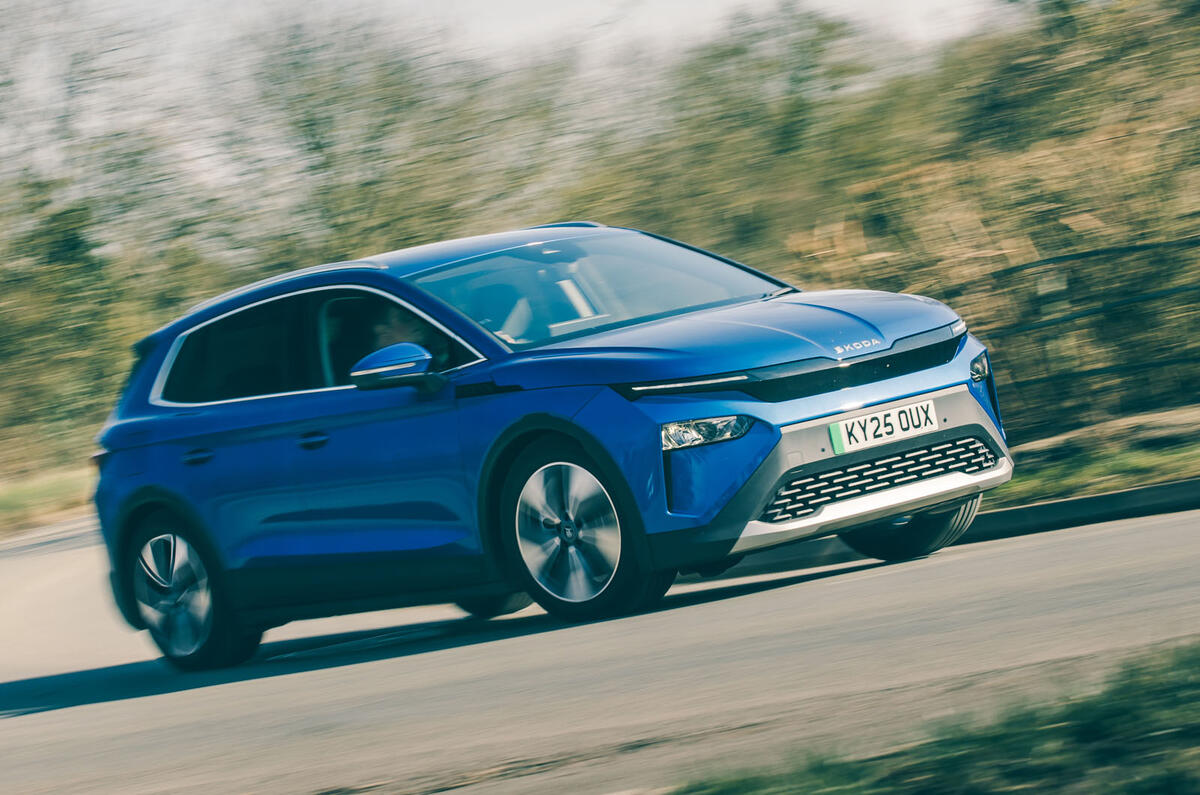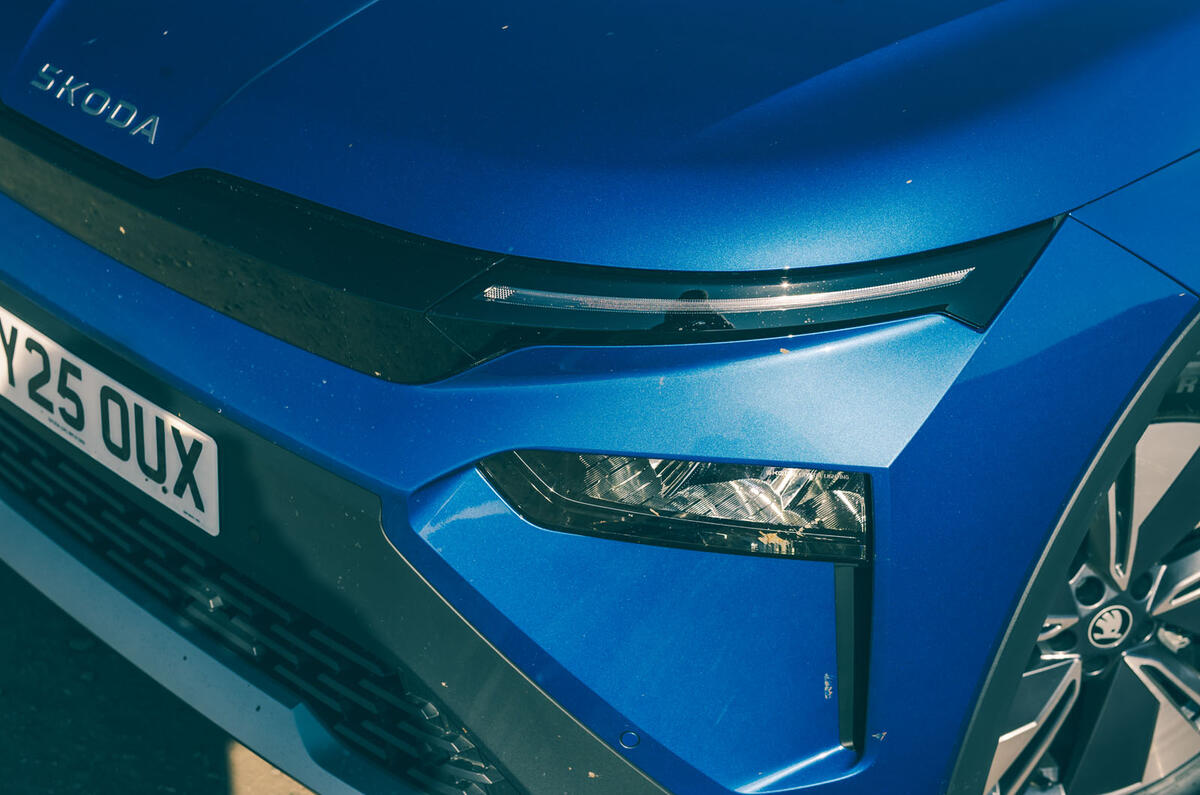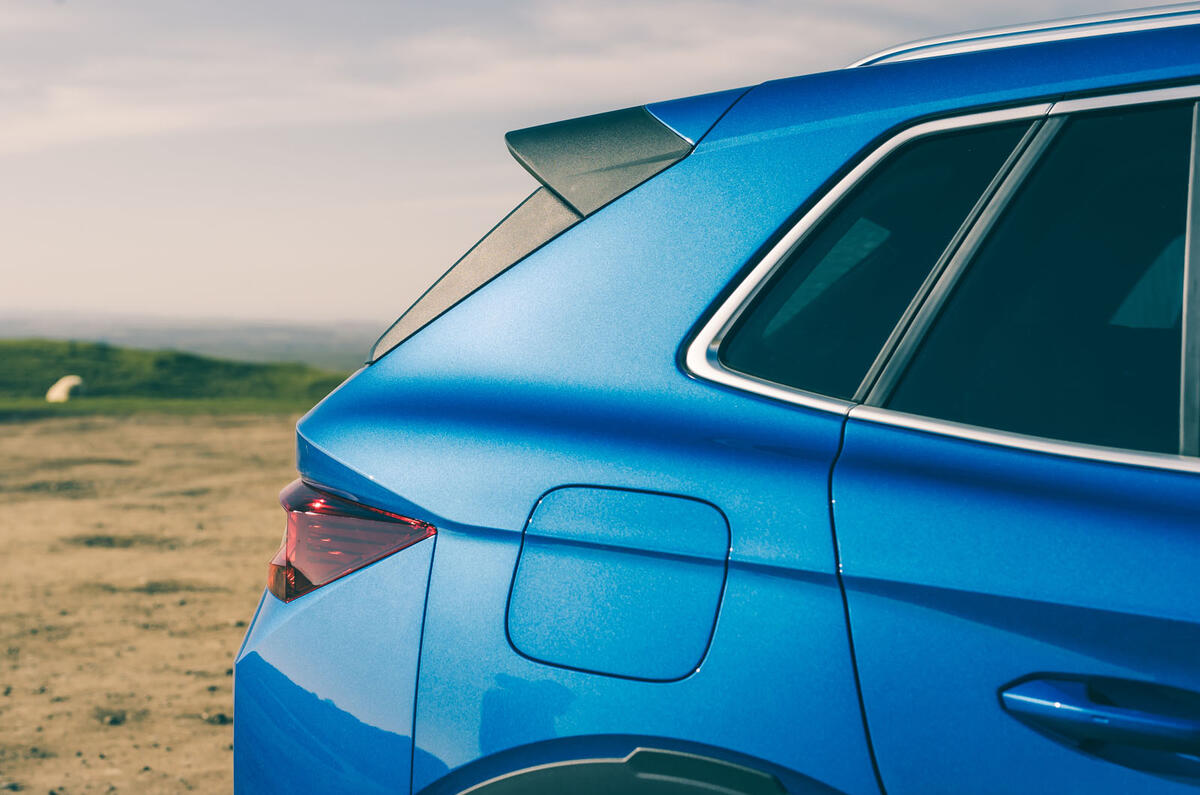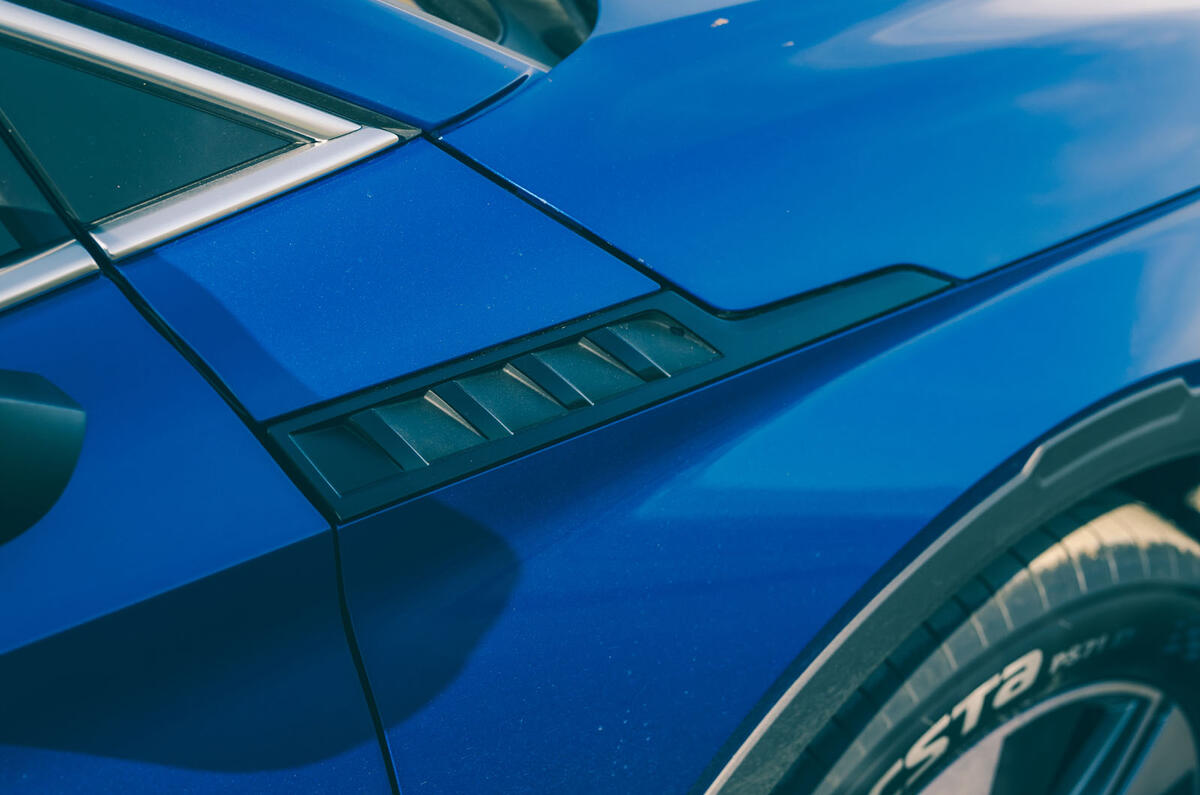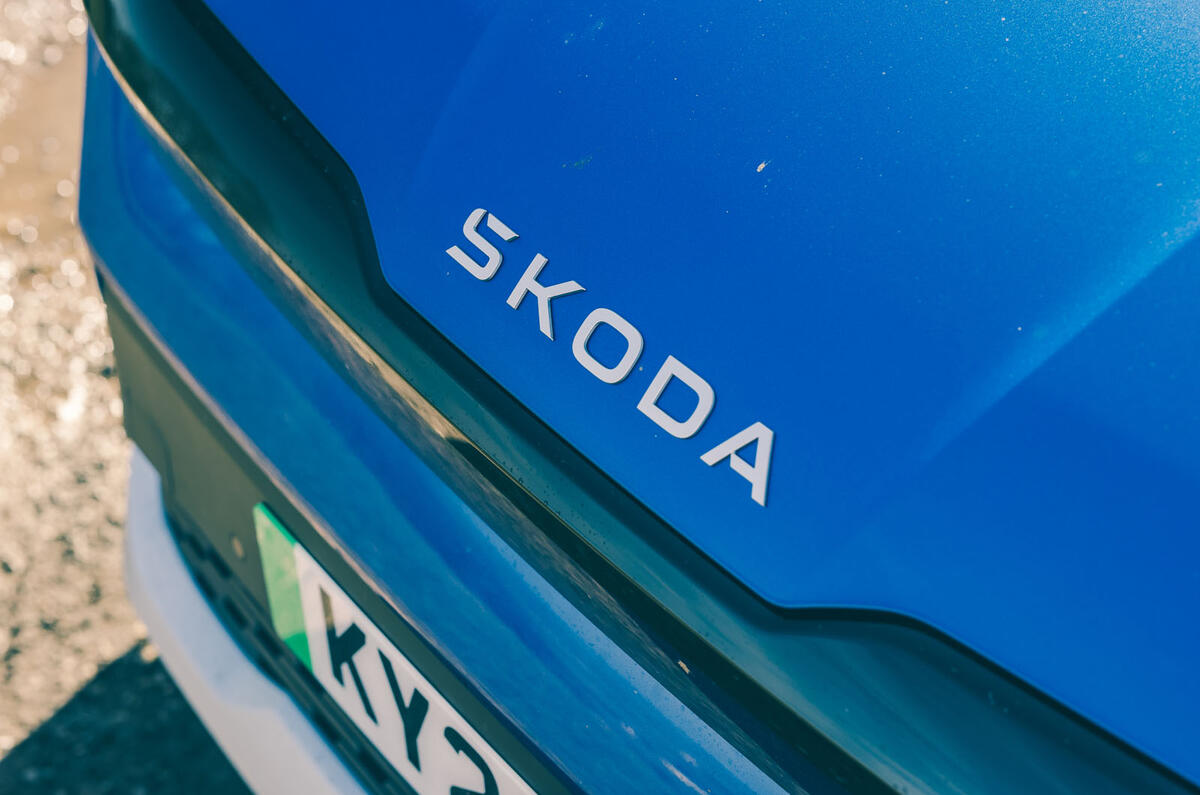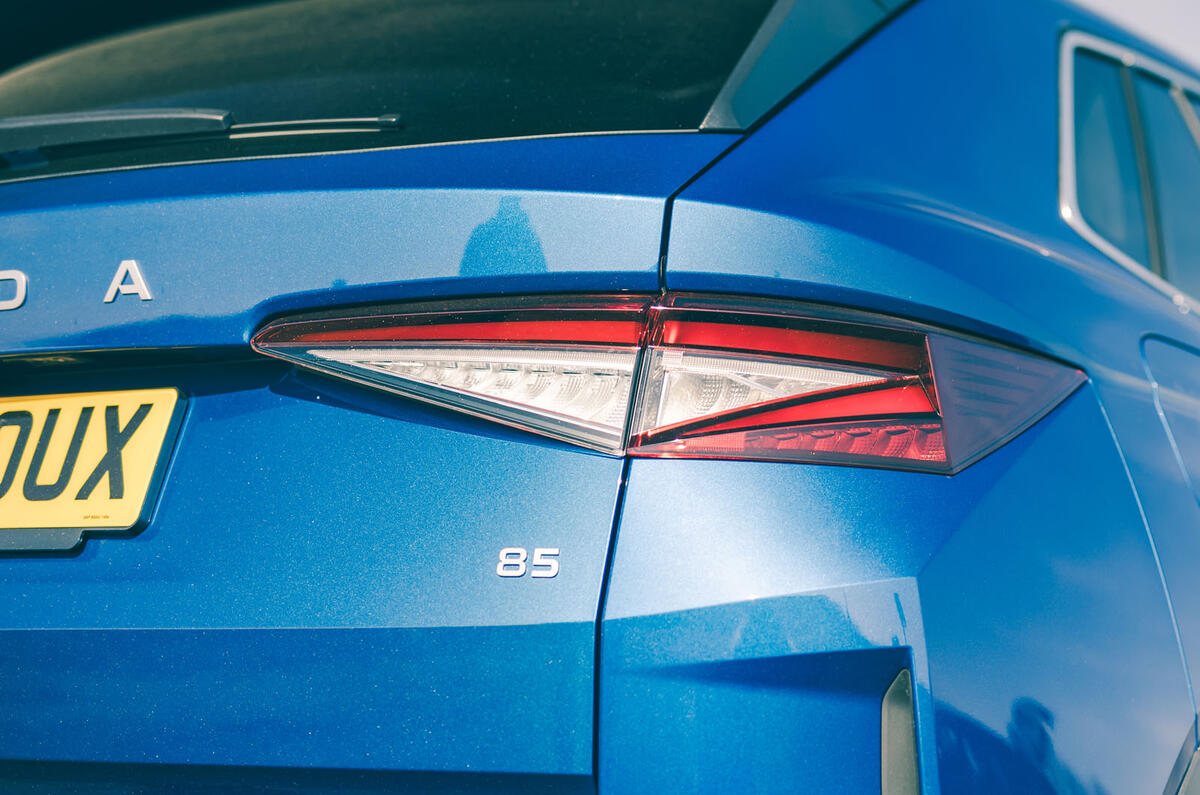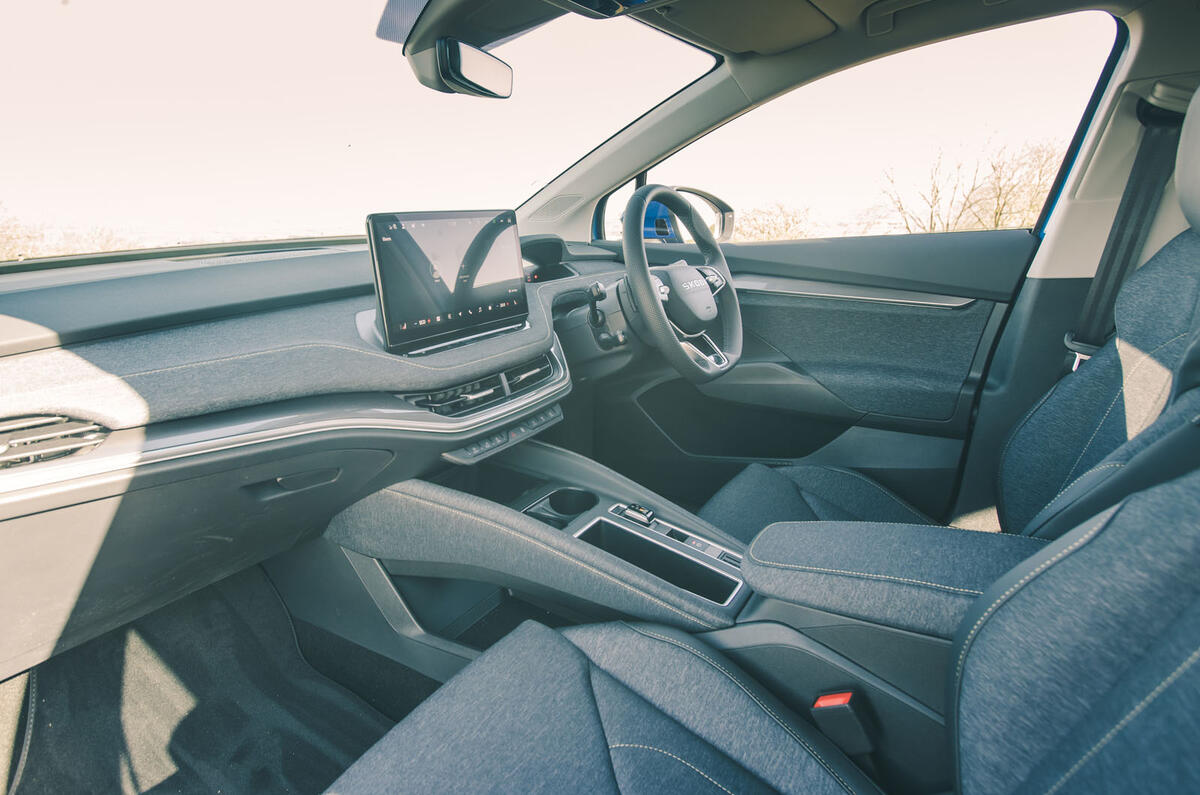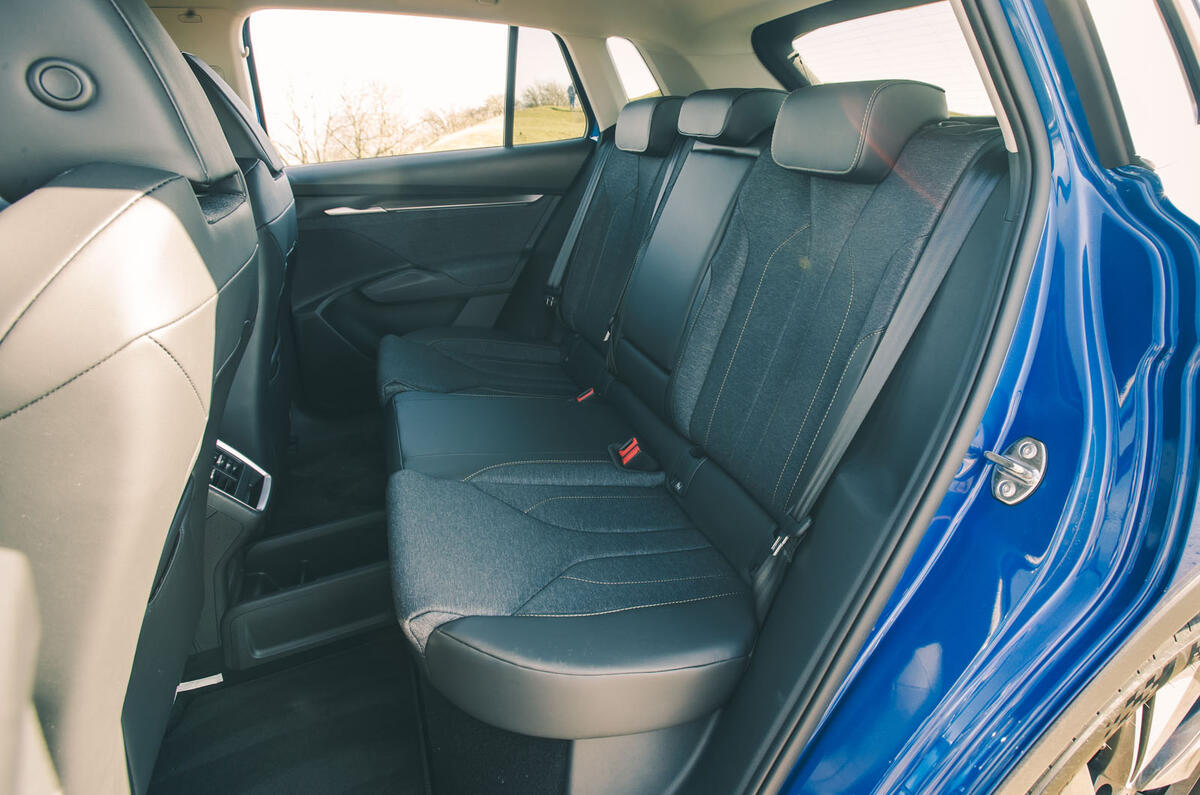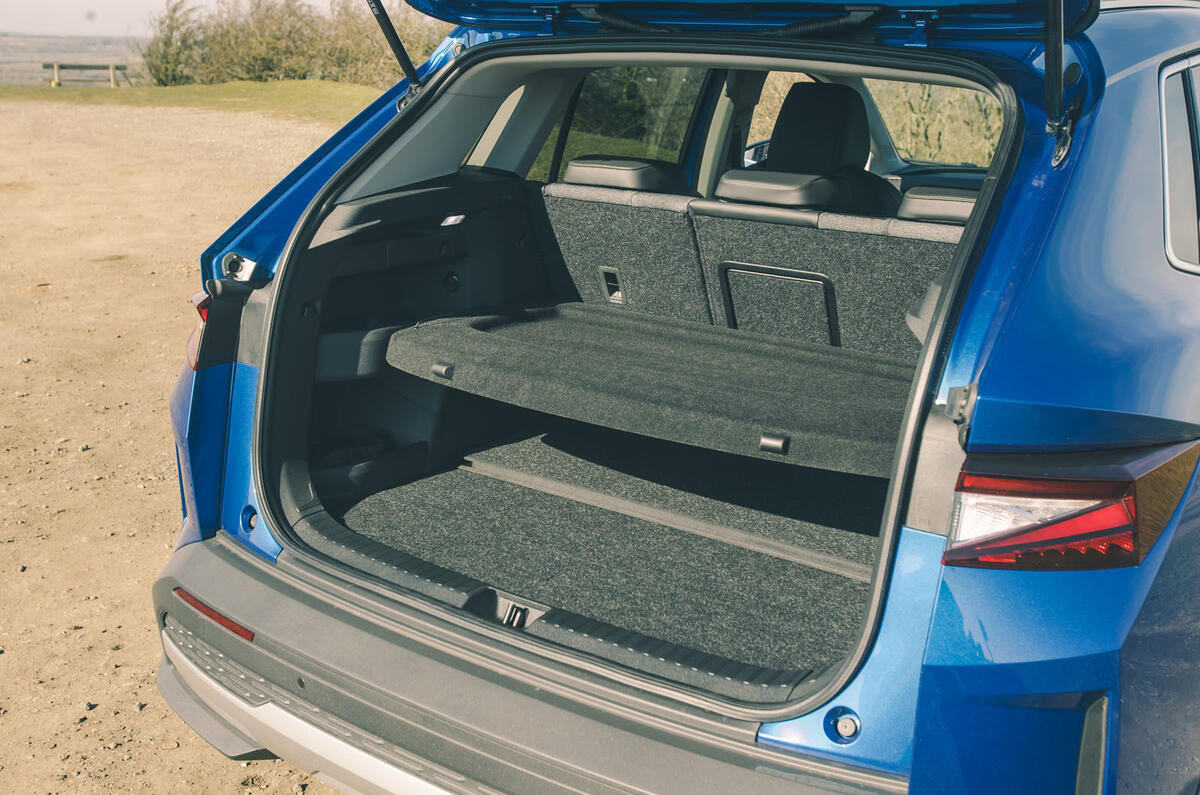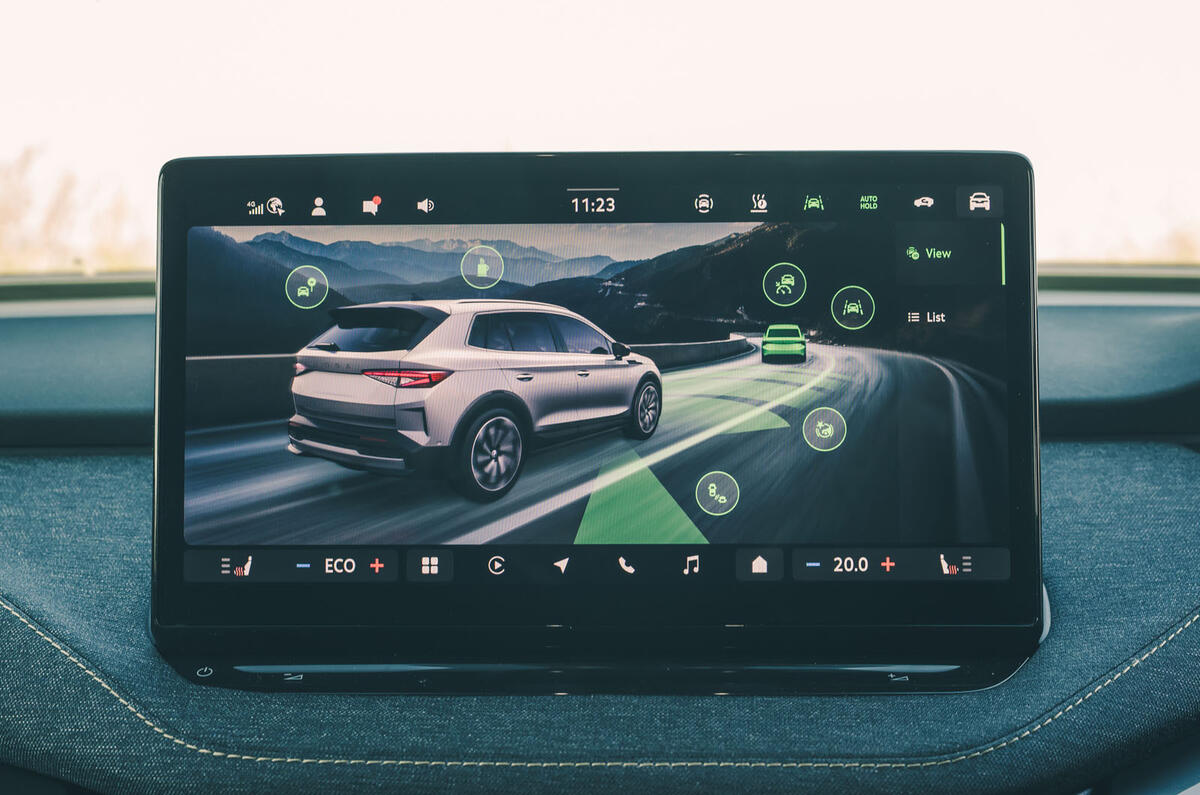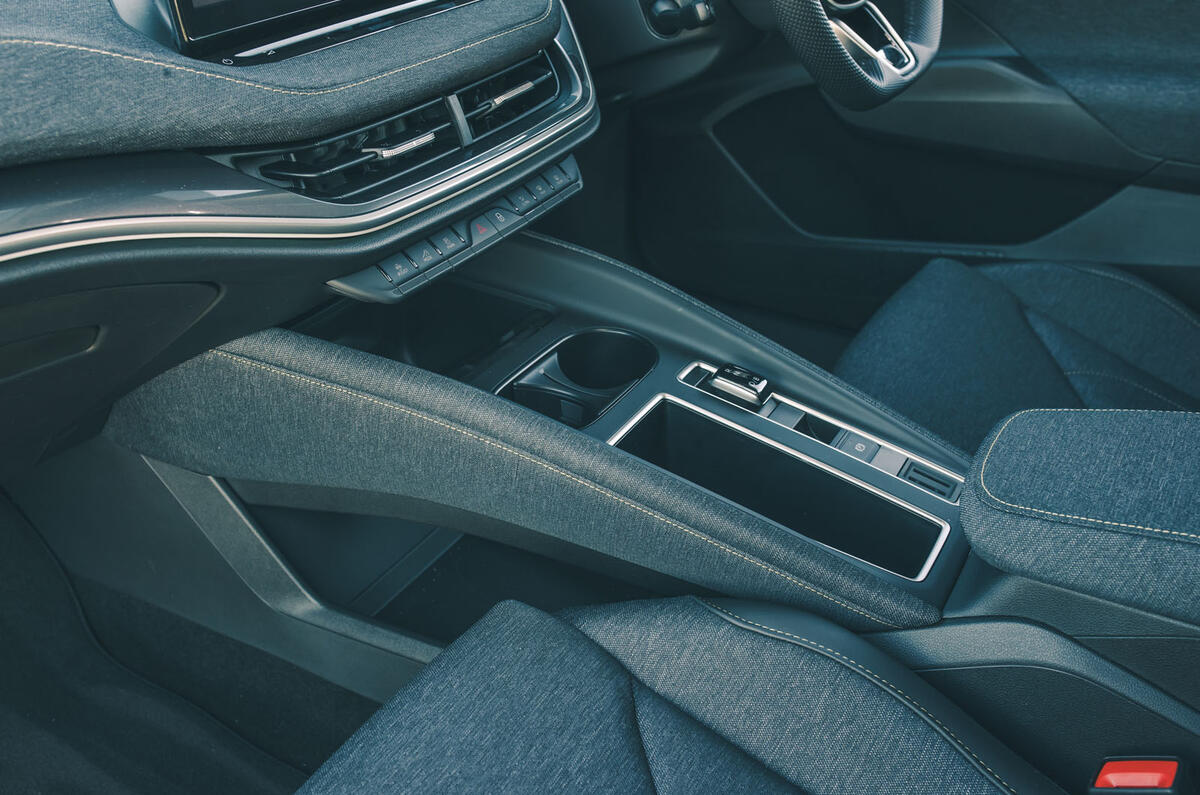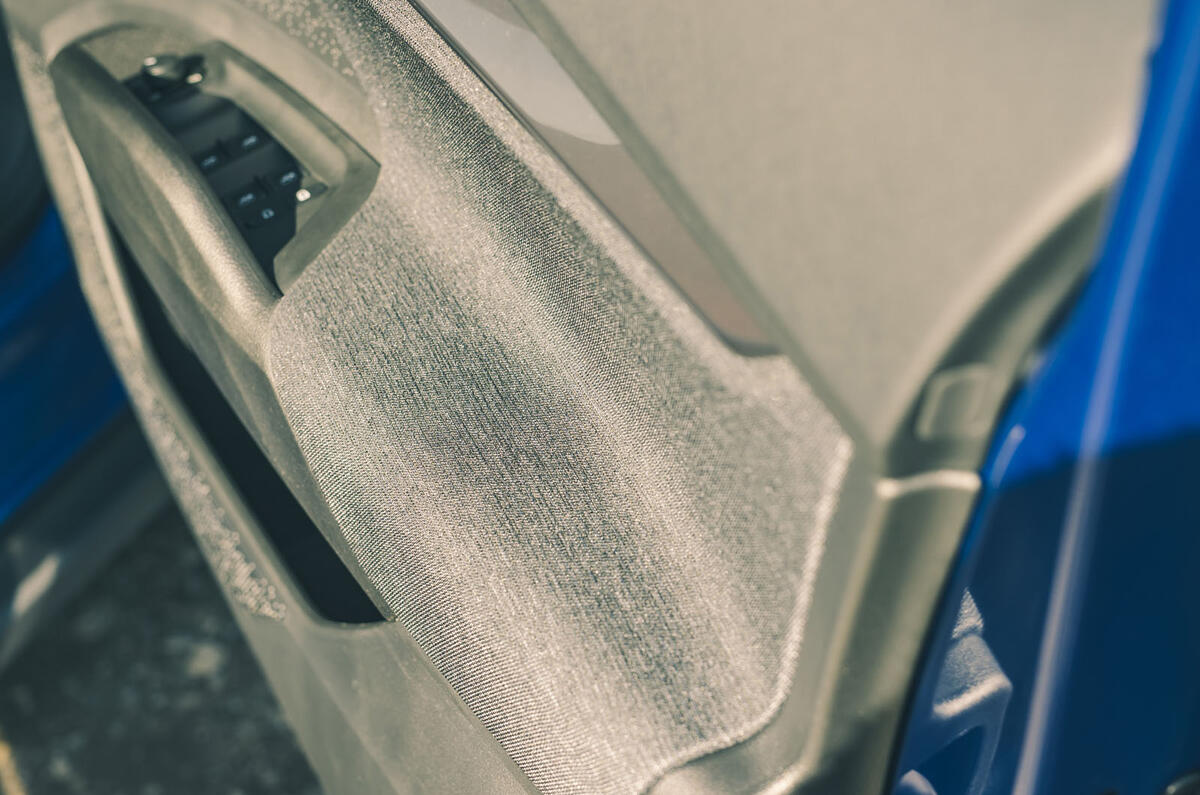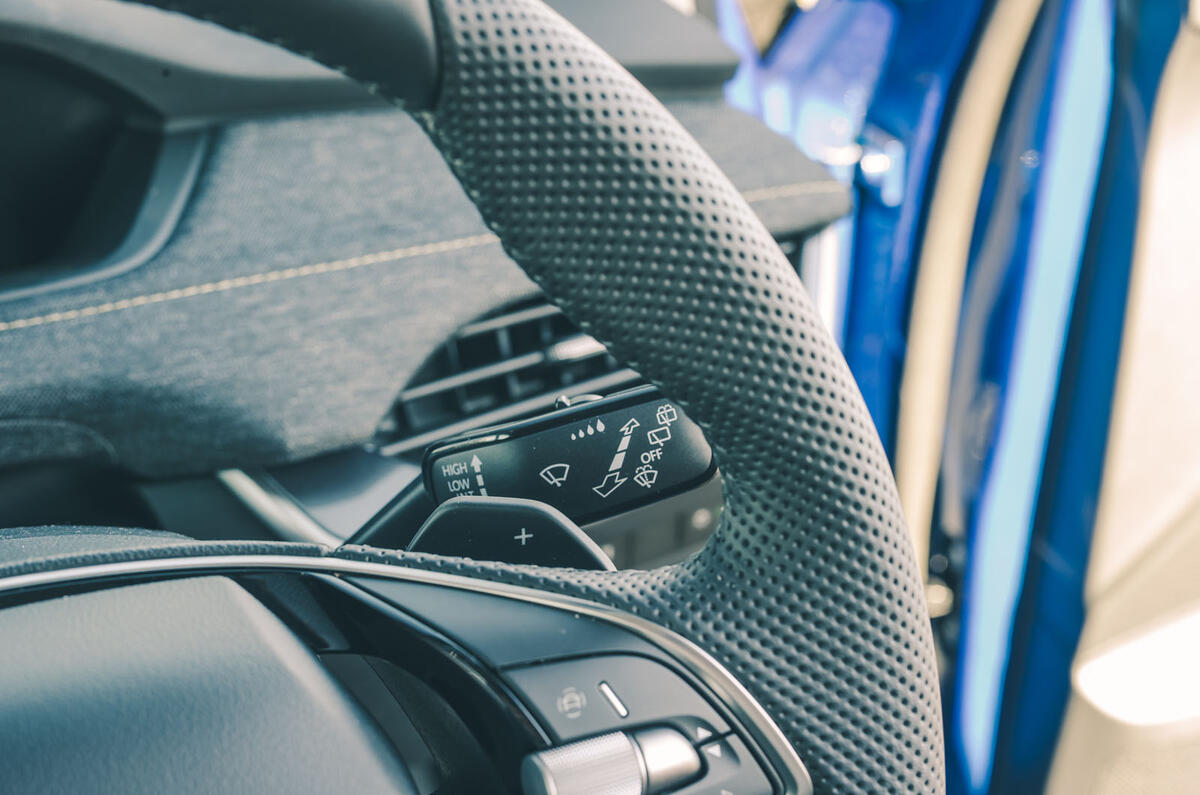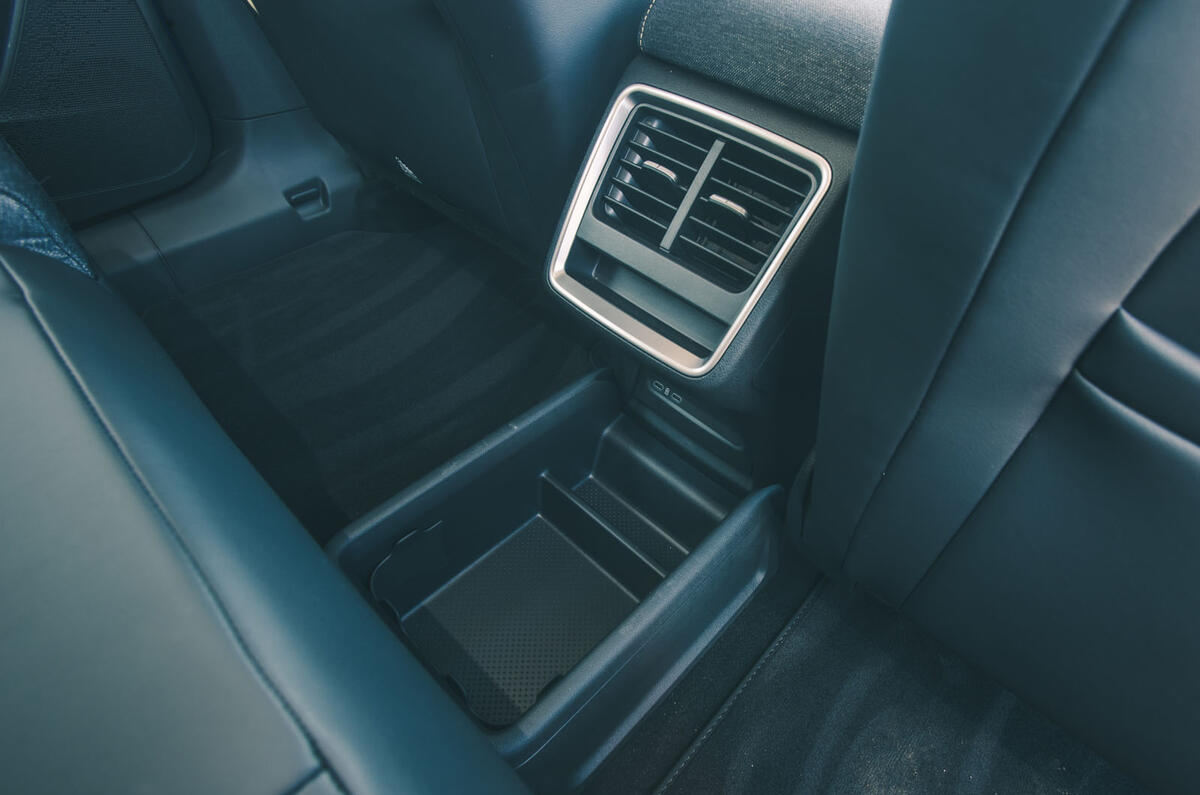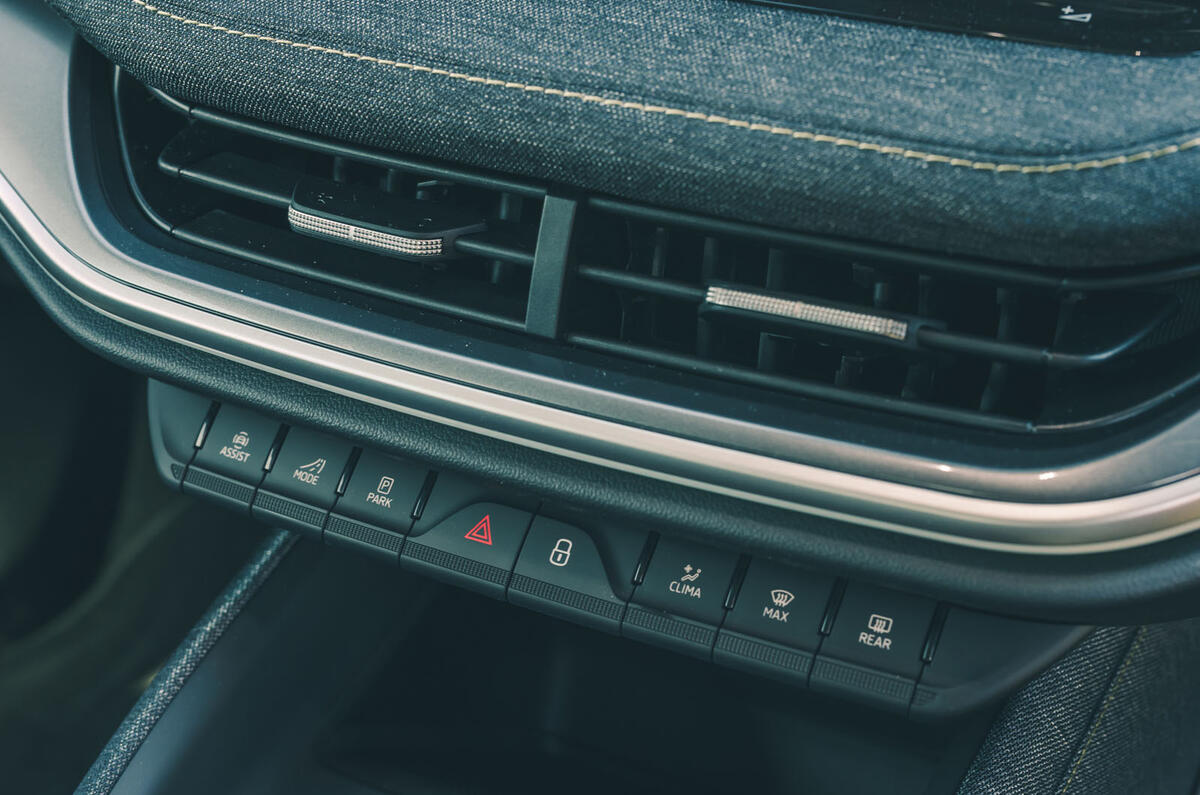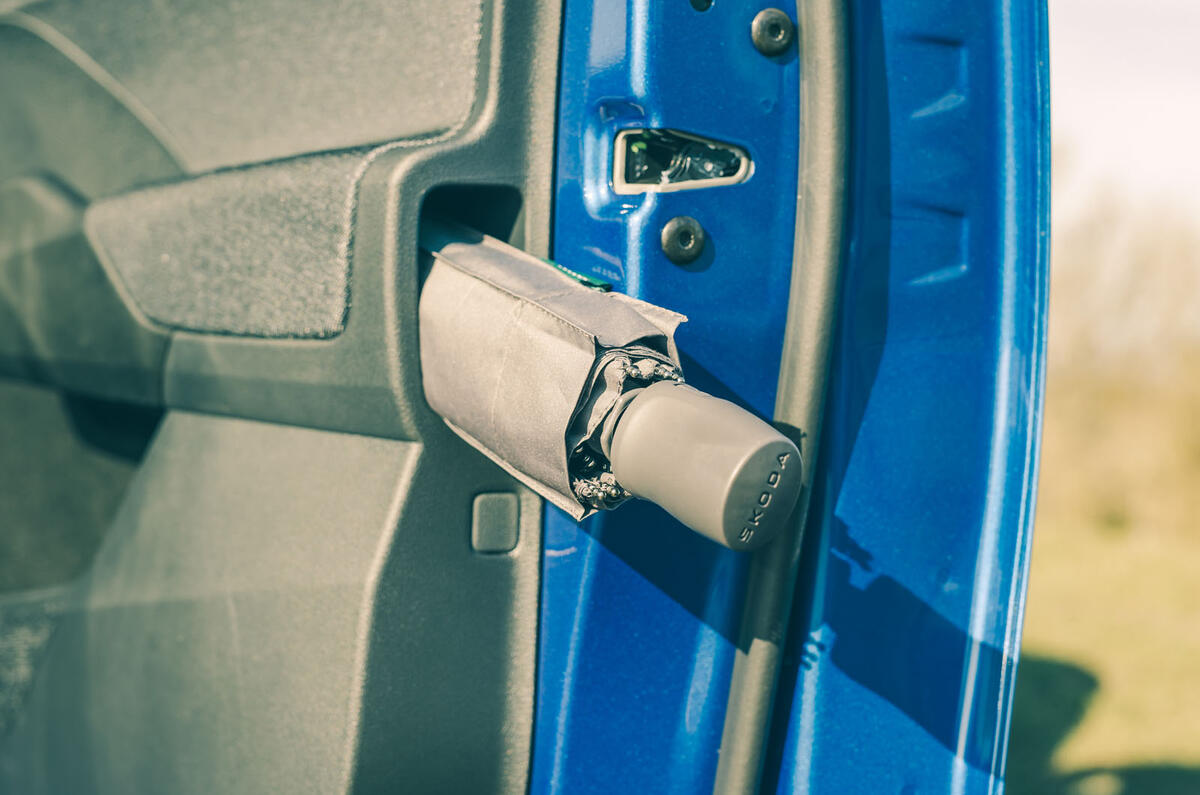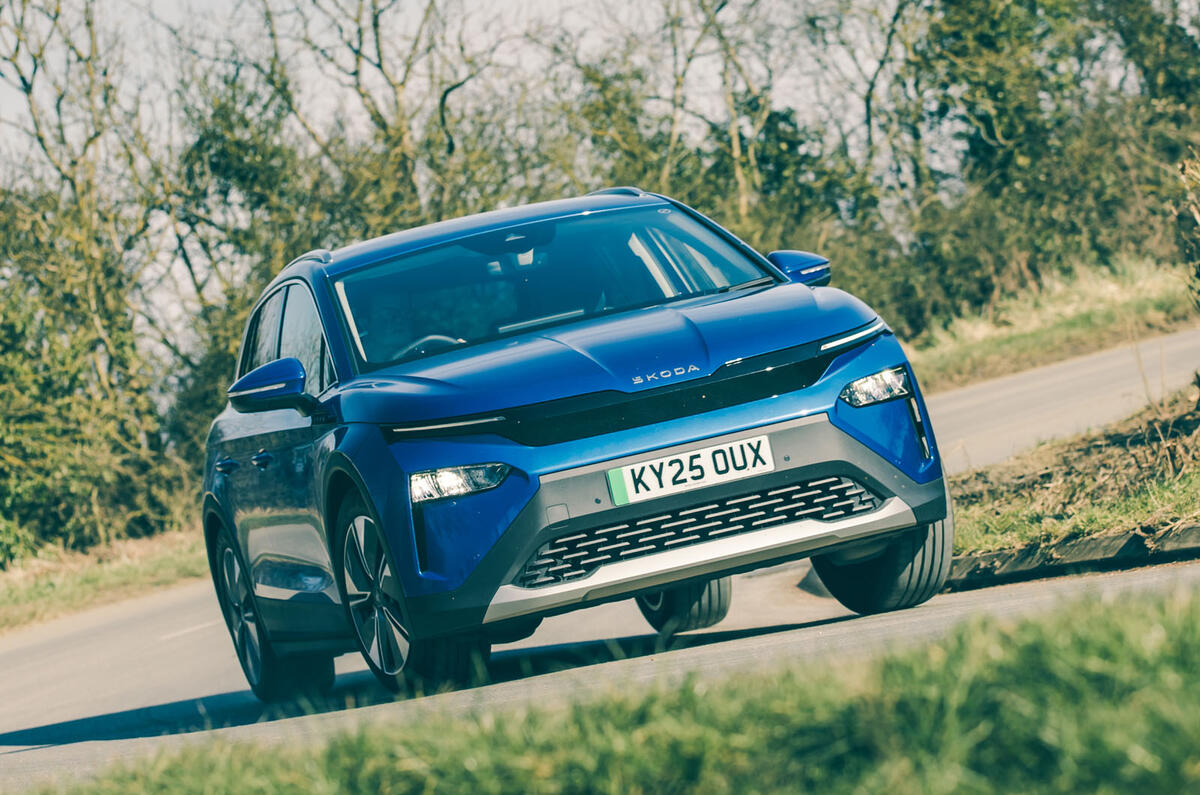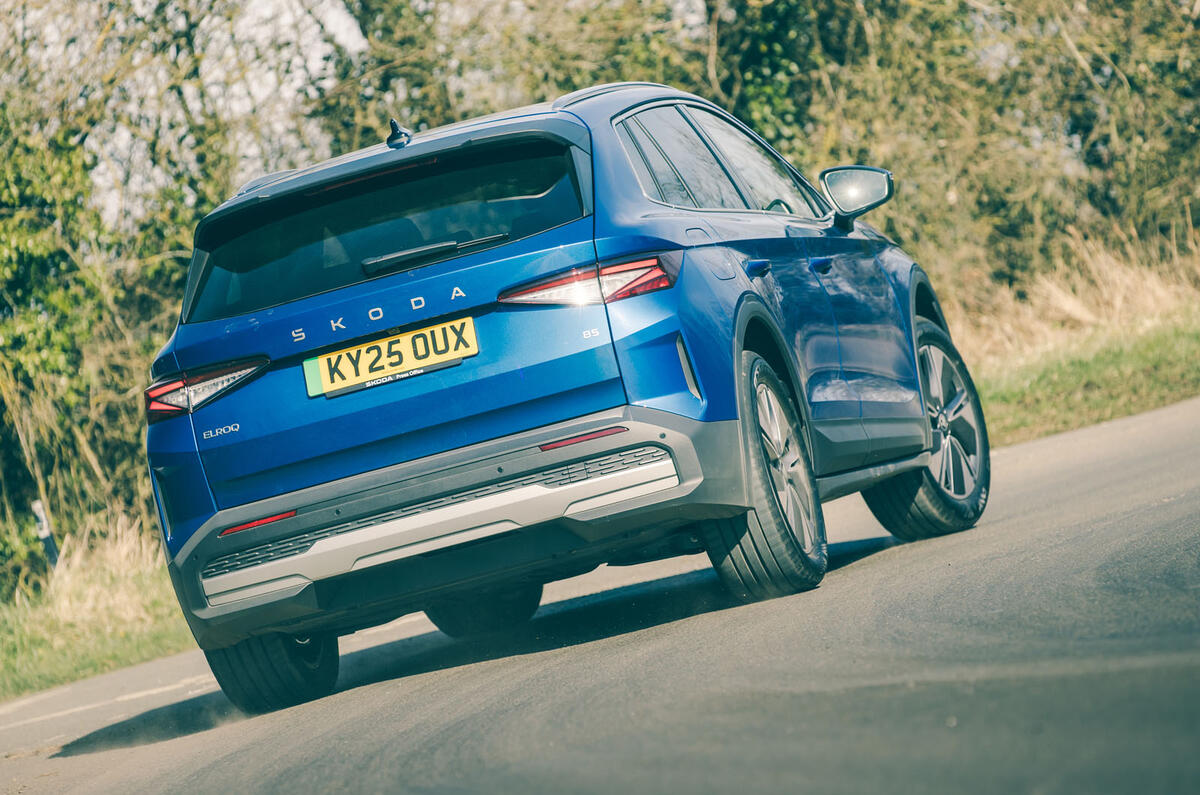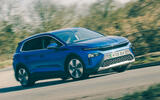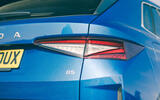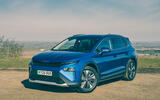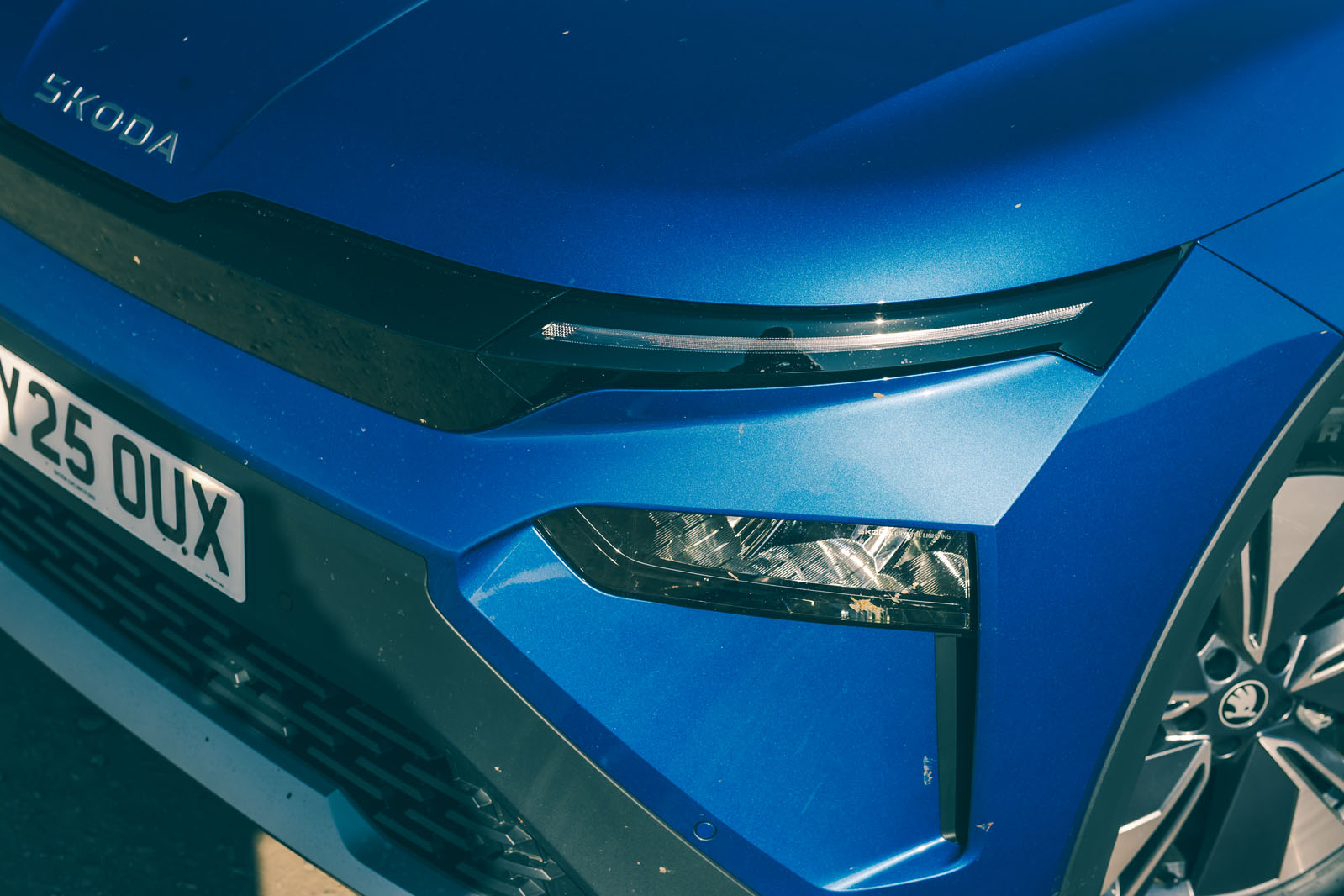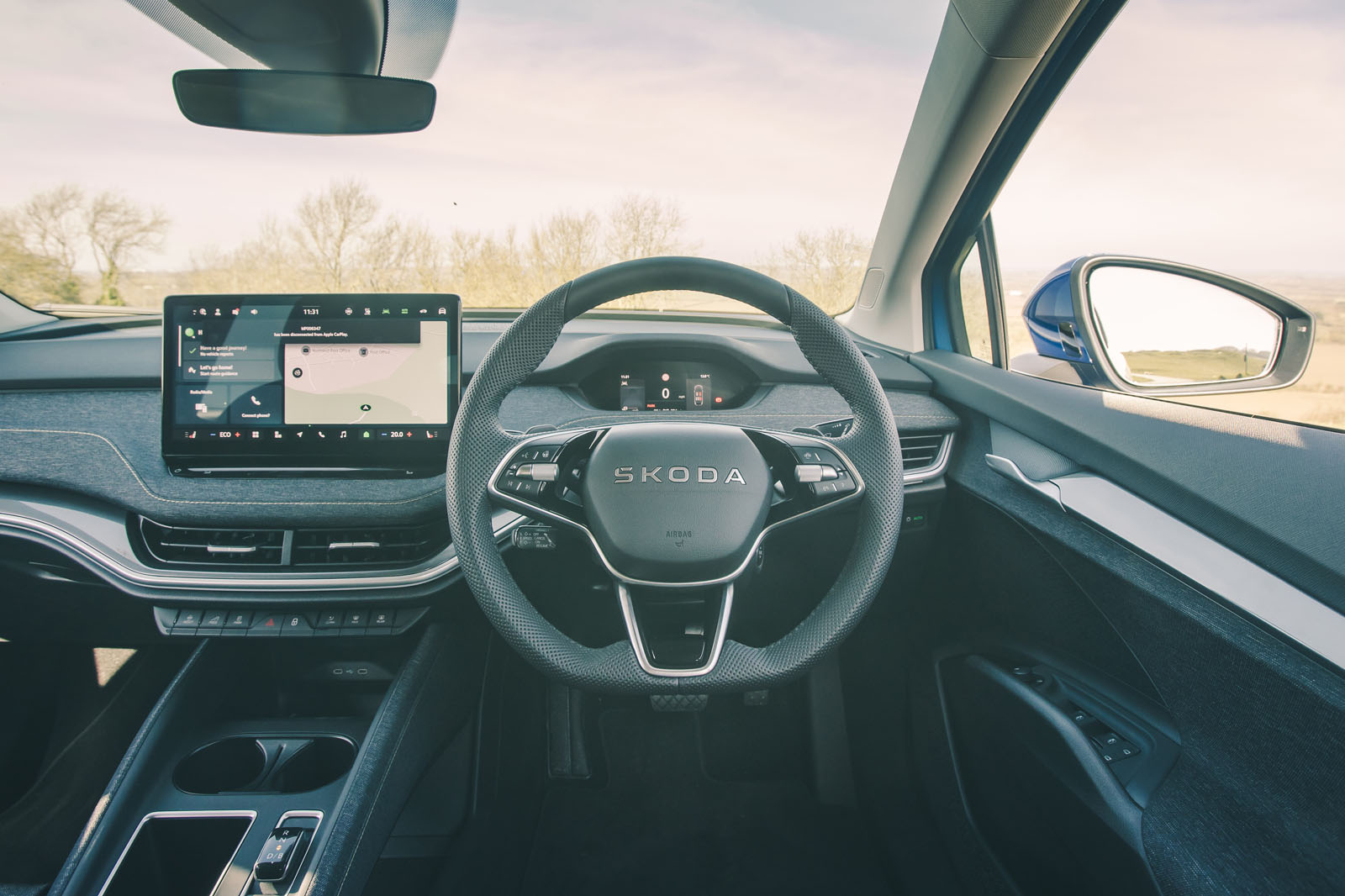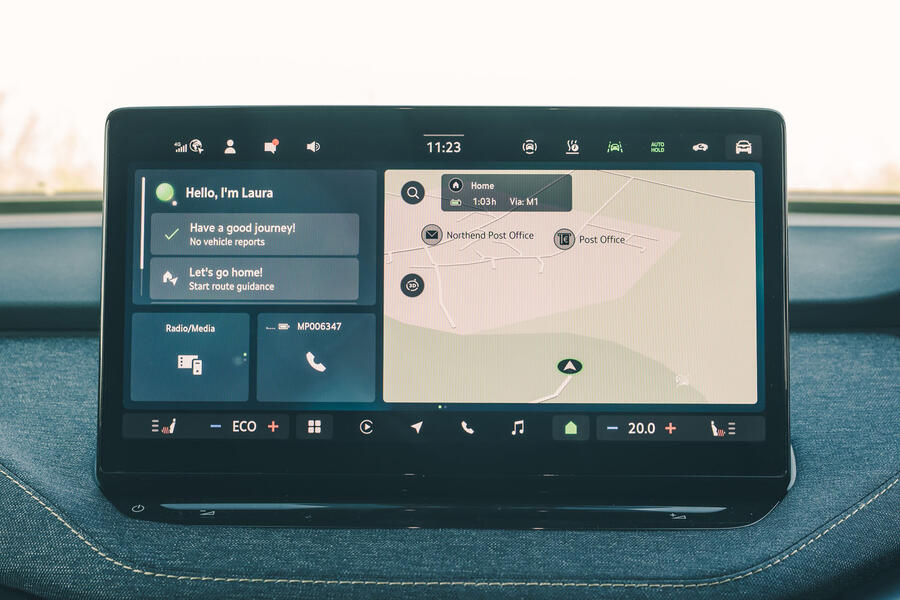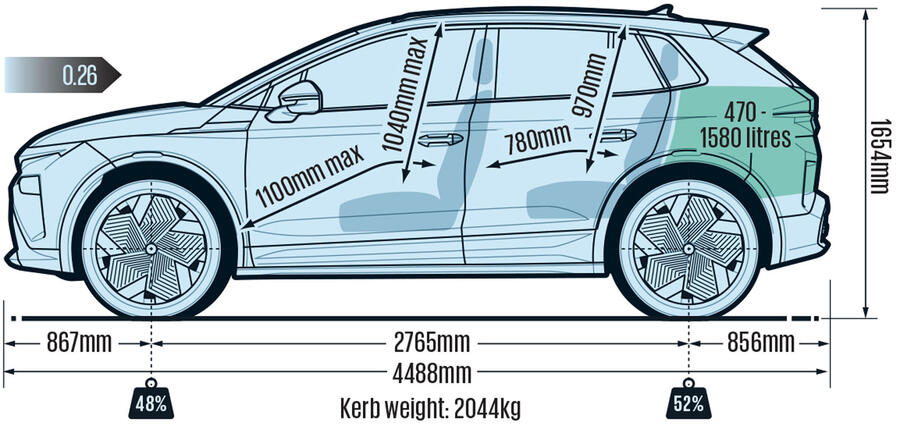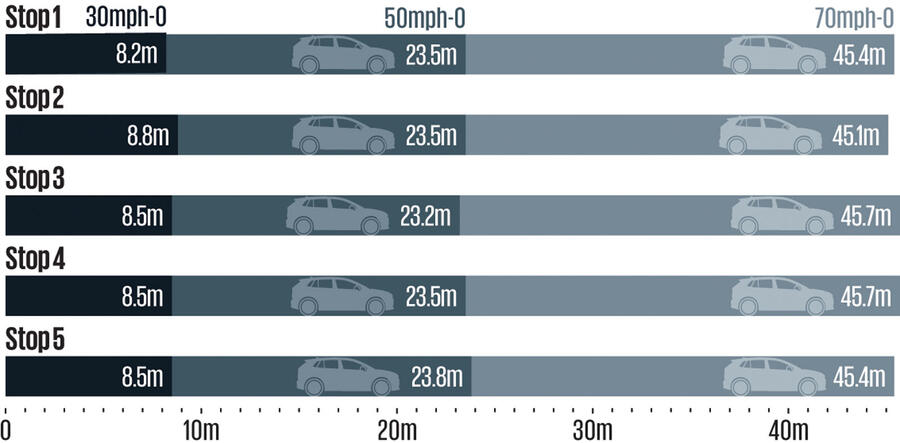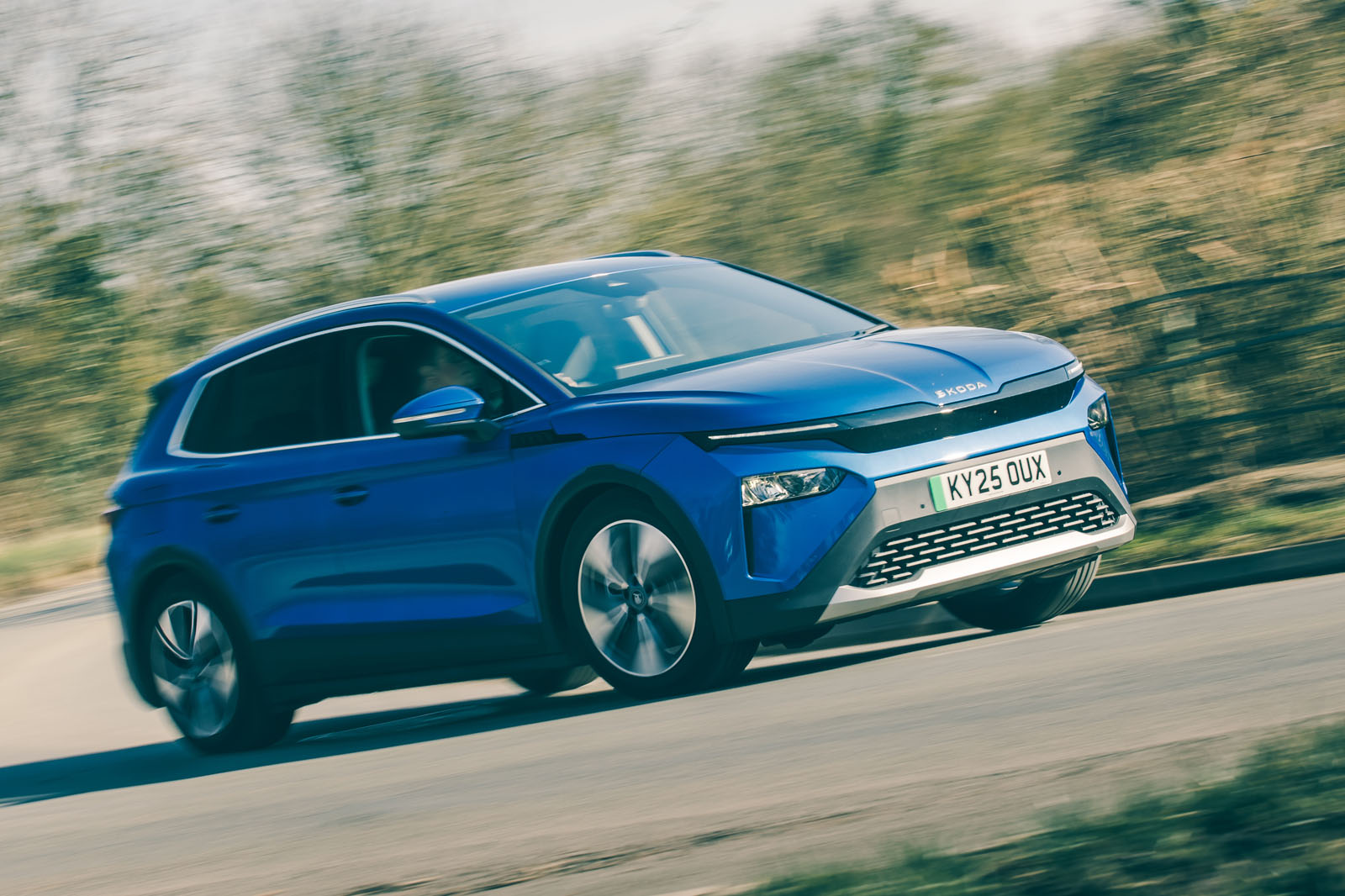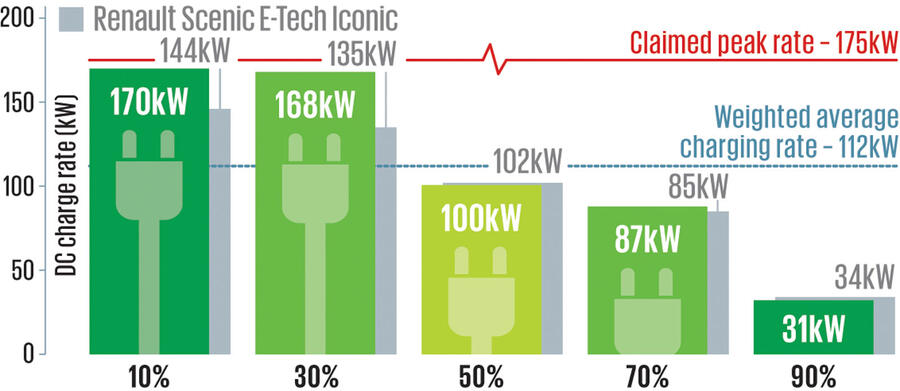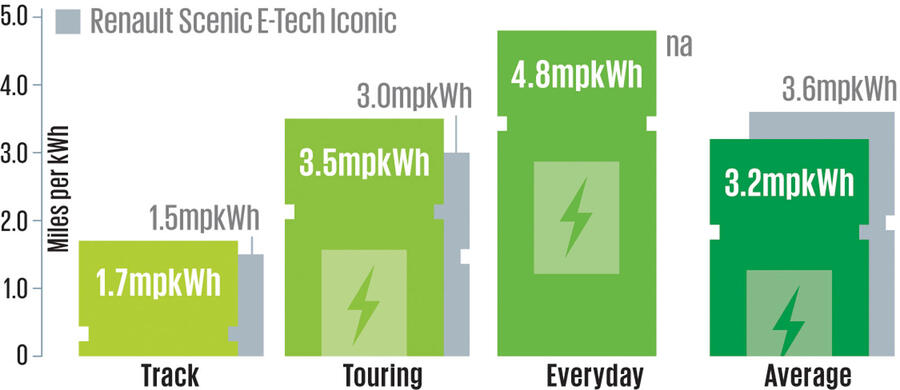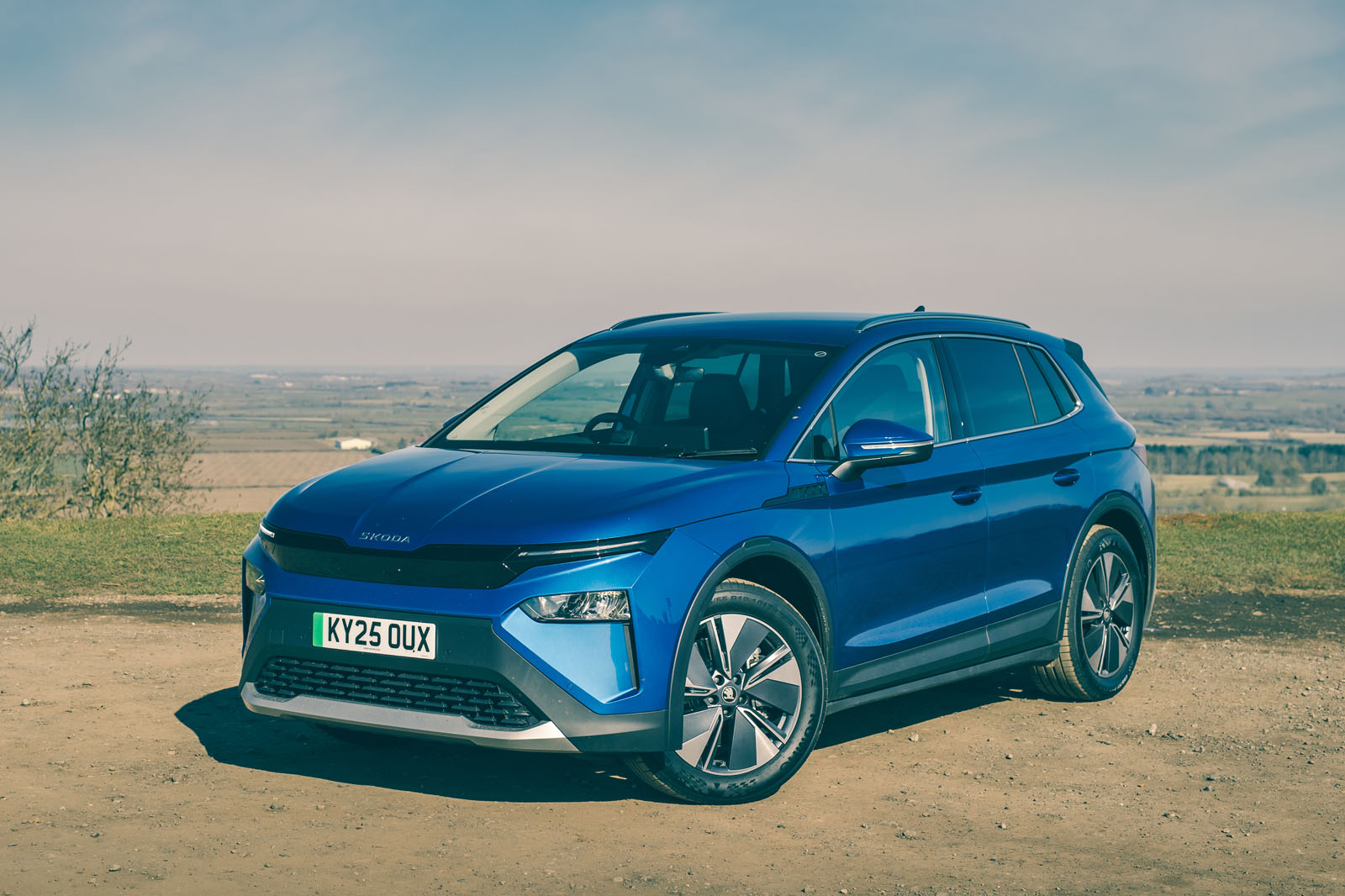Is the Skoda Elroq good for long trips?
Before a long journey from South London to Crewe, I ‘brimmed’ the 77kWh battery, and had a confidence-inspiring 343 miles of range on the display when I set off. Up until the motorway, that figure declined at almost exactly the same rate as my remaining distance, but once free of London’s Orwellian 20mph zones and barreling along at 70mph, the gap between the two numbers started to widen. By my first rest stop, I’d travelled 110 miles but ‘lost’ a displayed 140, with my efficiency falling from a decent 4.3mpkWh in town to a less-brilliant 3.4mpkWh - corresponding to a motorway range of 279 miles.
From there on, I kept an eye on my ‘comfort buffer’ - how much juice I was forecasted to have left by the time I parked up at my destination. Initial calculations suggested I’d have 106 miles remaining, but as I needed to maintain a constant 70mph and it was too warm to have the air con off, that safety net gradually shrunk as the miles rolled by, and I ended up with just 80 miles left on the counter.
No huge issue, as I could use an on-site 22kW charger took the Skoda back up to the mid-100s while I was in a meeting. And that meant that even after a couple of hours of zipping around Cheshire lanes for some photos, I still had enough to get me down to a fast charger near Birmingham, which got it from 15% capacity to 68% in just 20 minutes at an average charging speed of 139kW while I had a sorely needed coffee.
So, basically: yes, it's very good for long trips, but be warned that if you don't have a home charger you're at the mercy of expensive public devices - as with any EV.
Is the Skoda Elroq practical?
Because it's so capacious and sensibly packaged, the Elroq is the perfect vehicle for tip runs and Ikea hauls. The 470-litre boot's low load lip and square sides means it can accommodate bulky items of furniture and appliances without having to fold the rear seats, and there's a hidden space underneath so you can tuck away the charging cables.
The interior is also full of fun little ‘Simply Clever’ features which aim to make it as easy to live with as possible - and for the most part, they’re great, but who on earth signed off the front cupholders? There are two in the centre console, sensibly placed and easily reached – so far, so good – but the movable central divider doesn’t move far enough to accommodate a standard travel mug or water bottle in either of the two (much less both at the same time) - and a tall bottle on the passenger side blocks access to the crucial ADAS menu button. It might sound like I’m clutching at straws to find gripes in an otherwise extremely well-rounded package, but it is genuinely a real pain when you want to take a coffee and some water on a long journey.
That’s the only real gripe I had with the interior over a few months of driving. Maybe excepting the touch slider for controlling the volume, which I cannot believe has survived through a whole generation of VW Group products, so tricky is it to use. Fortunately there’s a nice clicky roller on the steering wheel, which I use instead.
My favourite of Skoda’s practicality-boosting Easter eggs is the pair of shelves that are neatly integrated into the sides of the boot - perfect for stopping loose bottles or breakables from rattling around the boot on the way home from the shop. But the hammock-esque secondary parcel shelf deserves a shout-out, too; I was struggling to find a use for it until I needed to separate some flowers from some heavy shopping bags - and now I think every car should have one.
What is the Skoda Elroq like to drive every day?
It’s not even just ‘good for an EV’, but easily one of the most recommendable and well-rounded family cars currently on sale - one which just happens to be electric.
In fact, I often forgot it even was, with this bigger-battery ‘80’ variant returning a real-world range in my hands of 282 miles - easily enough for a couple of weeks commuting. That’s with the caveat that temperatures never got much below mild in my time with the car - I’d expect that to have dropped nearer to 250 now the frost has set in.
But ultimately, the attribute I couldn’t stop remarking on was just how lovely the Elroq is to drive, with dynamic and performance characteristics that made it an absolute dream for daily drudgery. Its progressive power delivery, sure-footed handling and remarkably well-resolved ride meant that it was as comfortable lapping up long stretches of motorway as it was conveying me through nightmarish city traffic. The seats are comfortable, the driving position feels natural (whether you sit upright as in an SUV, or low and recumbent à la hatchback), visibility is great and its excellent manoeuvrability belies its generous footprint and chunky kerb weight.
That pervading sense of no-nonsense usability is augmented by a cabin that brilliantly splits the difference between functionality, ergonomics and quality - better than any VW Group car has managed in years. The touchscreen is a big old thing, sure, but its menus are laid out sensibly, it responds quickly, its graphics are slick and – most importantly – it connects to your phone without hesitation. It doesn’t serve as the all-out replacement for physical controls, either - with nice clunky buttons, switches and rollers scattered throughout the cockpit to give easy, eyes-off access to the functions you’ll most often use on the move.
Can I use the Skoda Elroq in the city?
At 4.5m long and weighing more than two tonnes, the Elroq is hardly the ideal suburban runabout on the face of it, but it’s just so supremely manouverable and energetic that you can forget all about its size and heft.
It’s amusingly rapid off the mark – never scrabbling for traction or chirping the tyres – and handles impressively neatly for a car with no sporting aspirations whatsoever. It feels much smaller and lighter than it is, courtesy of its responsiveness and commendable body control through corners, so it’s genuinely quite a good laugh to zip around the suburbs - even below 30mph.
Sixties-era multi-storey car parks are a formidable proving ground for such attributes. Misjudge an apex on a dizzying, narrow spiral ramp, and at best you draw the ire of the drivers behind you as you fumble your way stressfully through a corrective manouver. At worst, it’s a sickening graunch as your alloys dig into the high concrete kerb, or a heart-stopping twang as a mirror clatters into an unseen pillar. I don’t worry about either eventuality in the Elroq, because its predictable and quick steering, together with its excellent visibility and short overhangs, mean it’s no more difficult to negotiate tighter environments than it would be in a supermini.
It helps that the parking sensors and 360deg camera are among the more competent I’ve tried, but even without the technological aids it’s a supremely easy car to get used to - getting one over on its innumerable rivals by virtue of being just, well, fantastically driveable.
Which options should I choose for my Skoda Elroq?
Definitely go for the bigger battery if you regularly travel outside of the city limits: the significantly improved range is well worth the extra outlay.
I was glad we plumped for the £600 Lodge interior package, too, as the two-tone seats, orange seatbelts and contrasting stitching went some way to livening the cabin up and giving it a more homely vibe. That was just one of a few optional extras we had on our car, which added up to nearly £9000 in total.
The heat pump was a chunky £1100 and I didn’t really feel the benefit, having run the Elroq mostly over summer, but I think you’d welcome the efficiency boost over the colder months, so it gets a pass. Same goes for the £350 Winter pack: I didn't have much call for the heated rear seats and windscreen, but I know I'd use them if I was heading out in winter with some mates.
I'm much colder (pun intended) on the £650 Driver pack – which adds a questionably useful Dynamic Chassis Control suite based on the Golf GTI, of limited utility here – and the Maxx package, which adds £950 on top of the usefully specified Advanced pack (stay with me) - for nothing of any real use, like a naff massage function for the front passenger and remote park assist.





